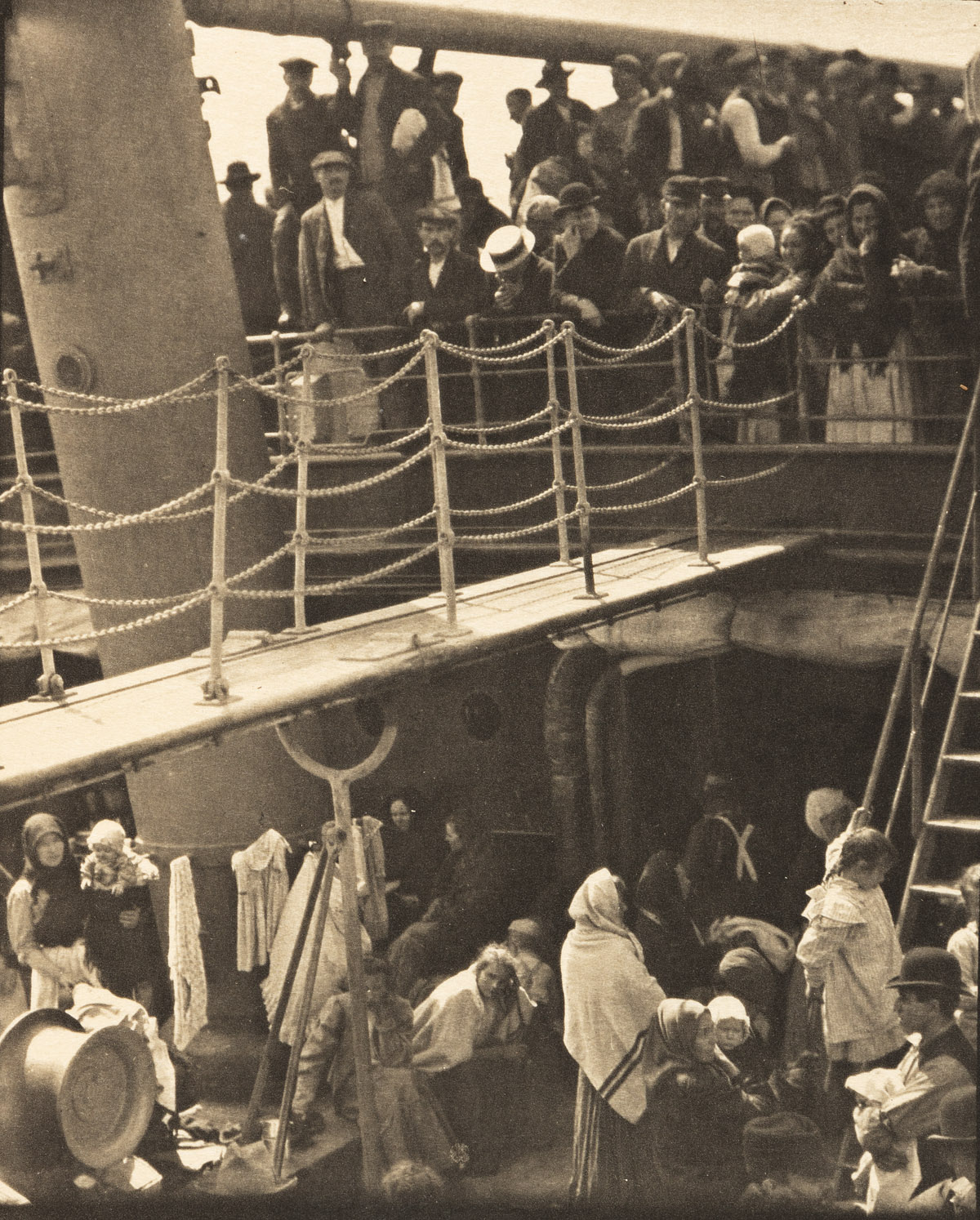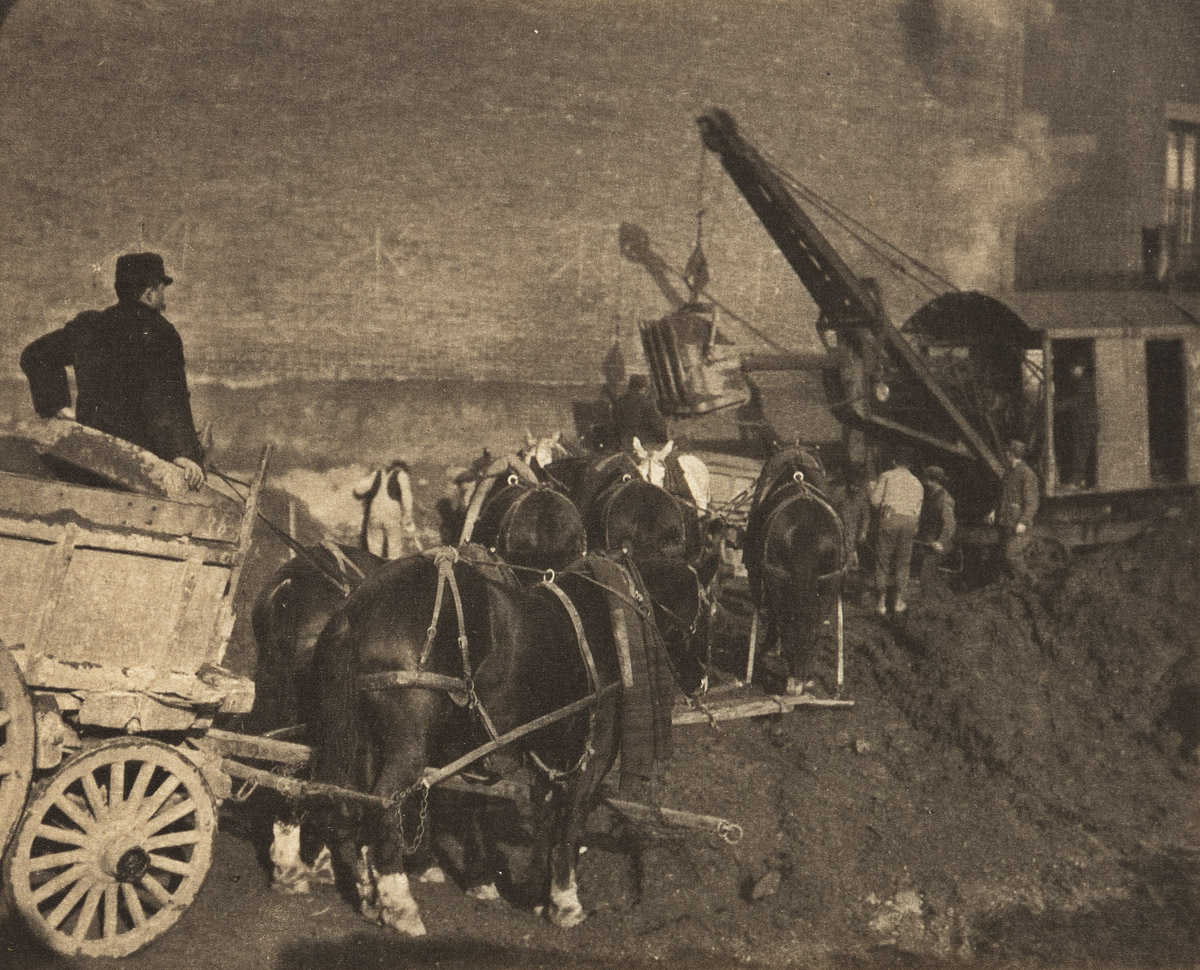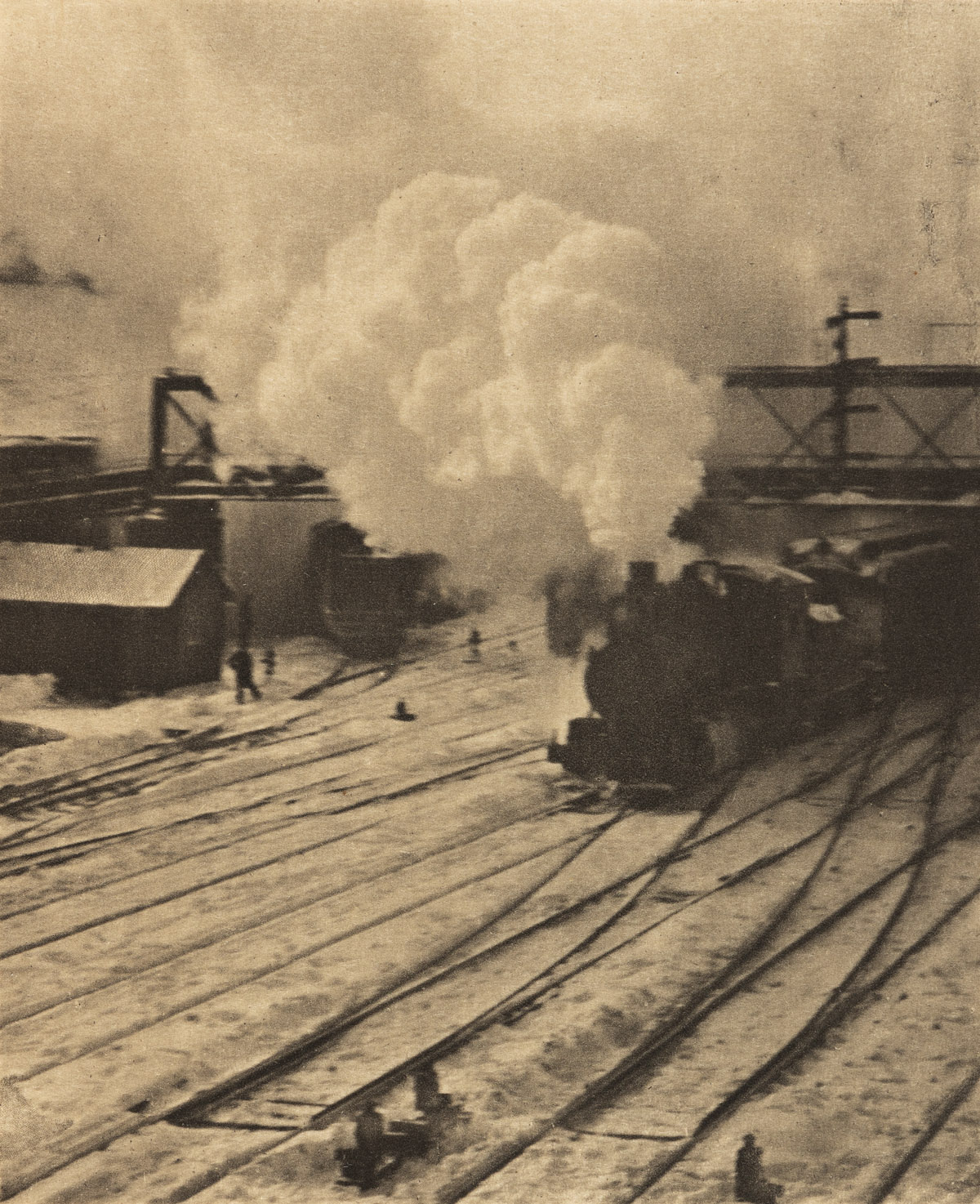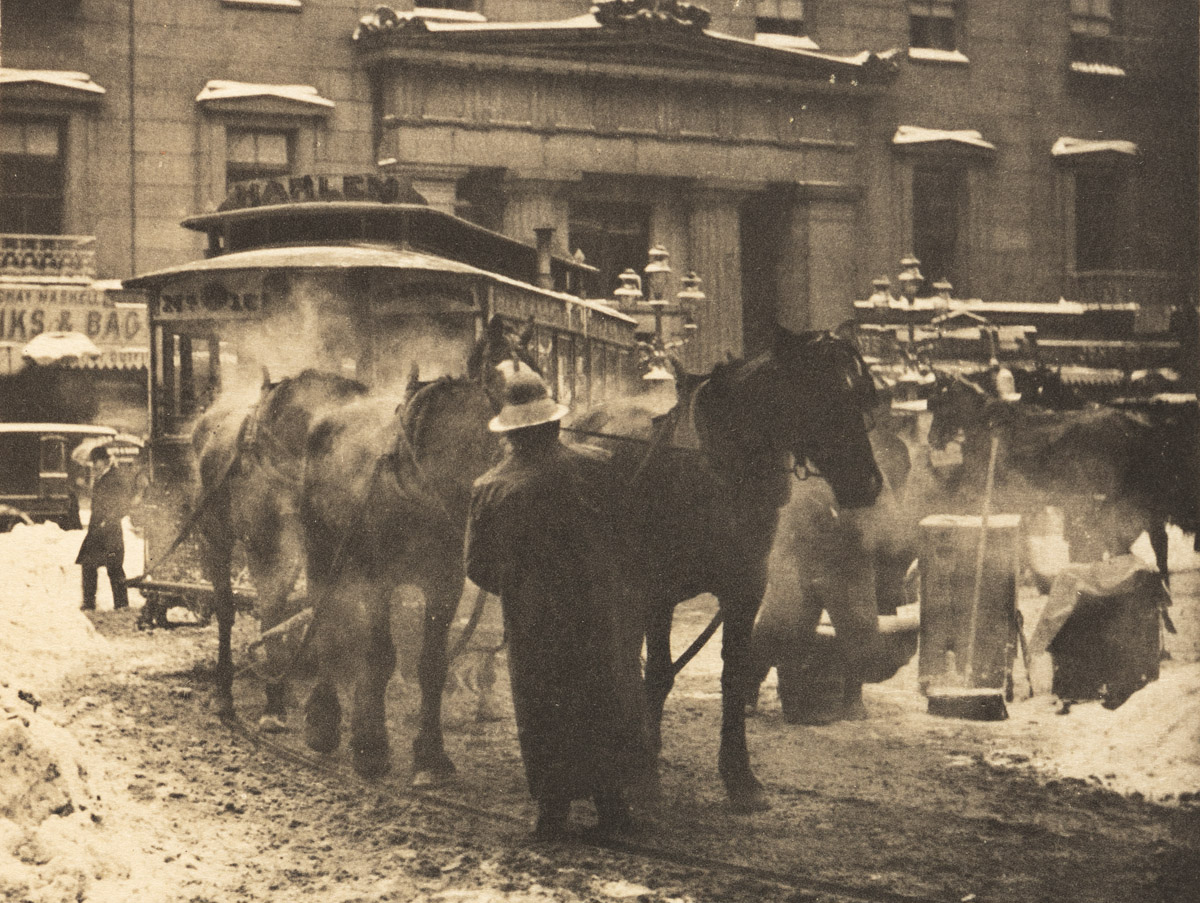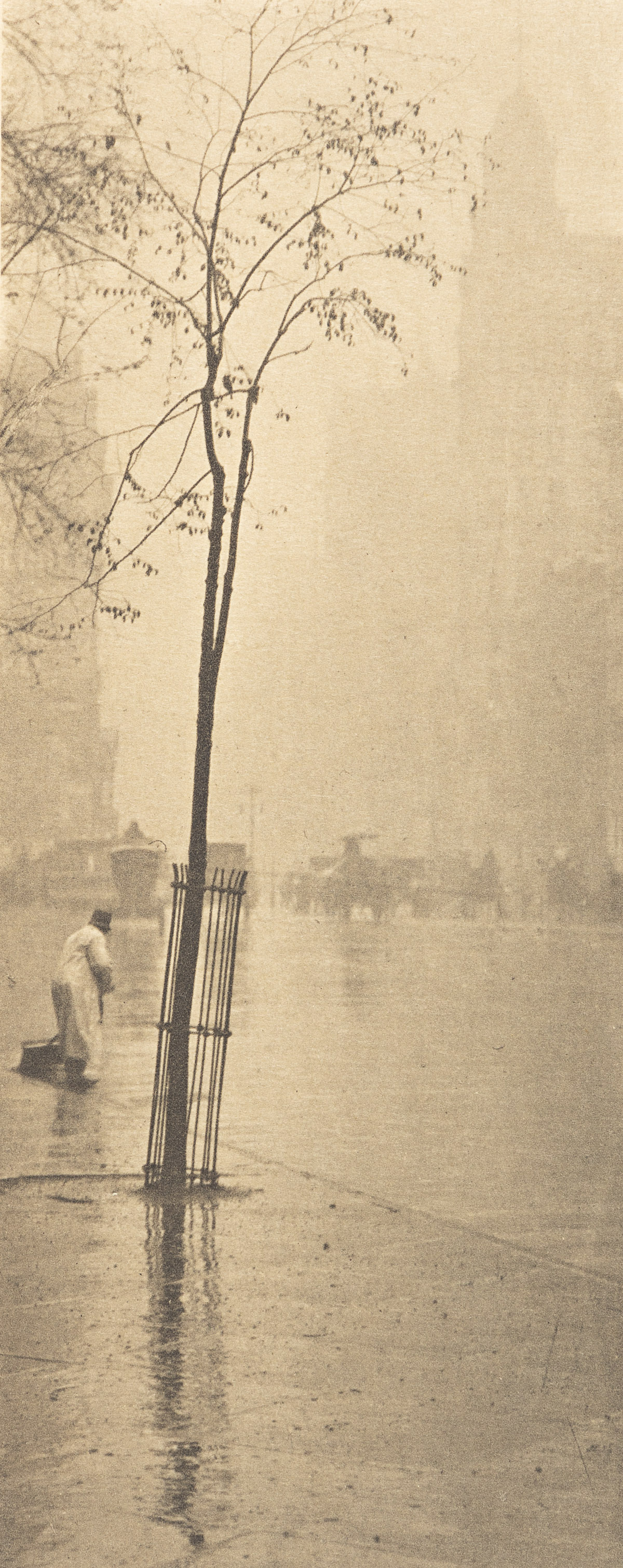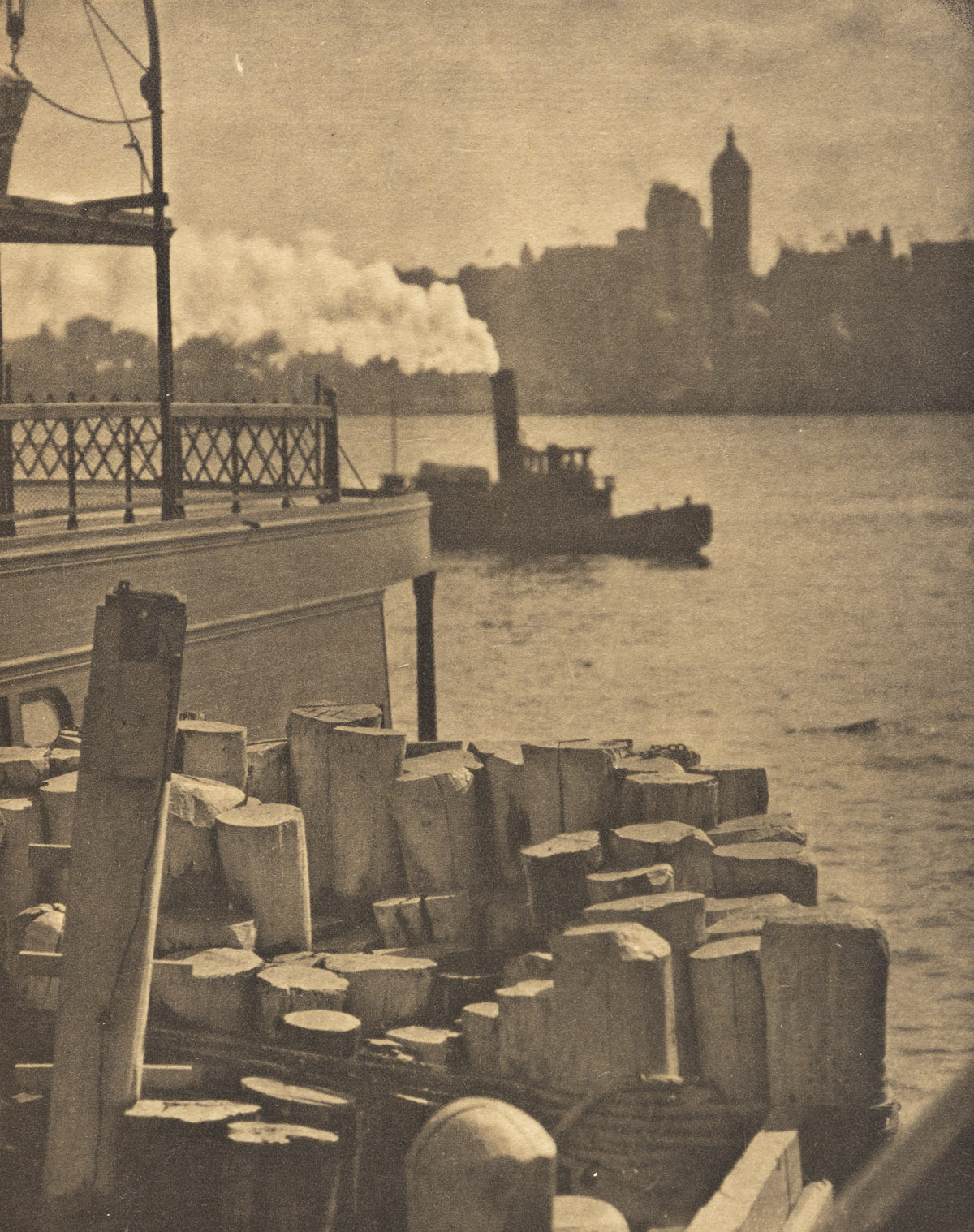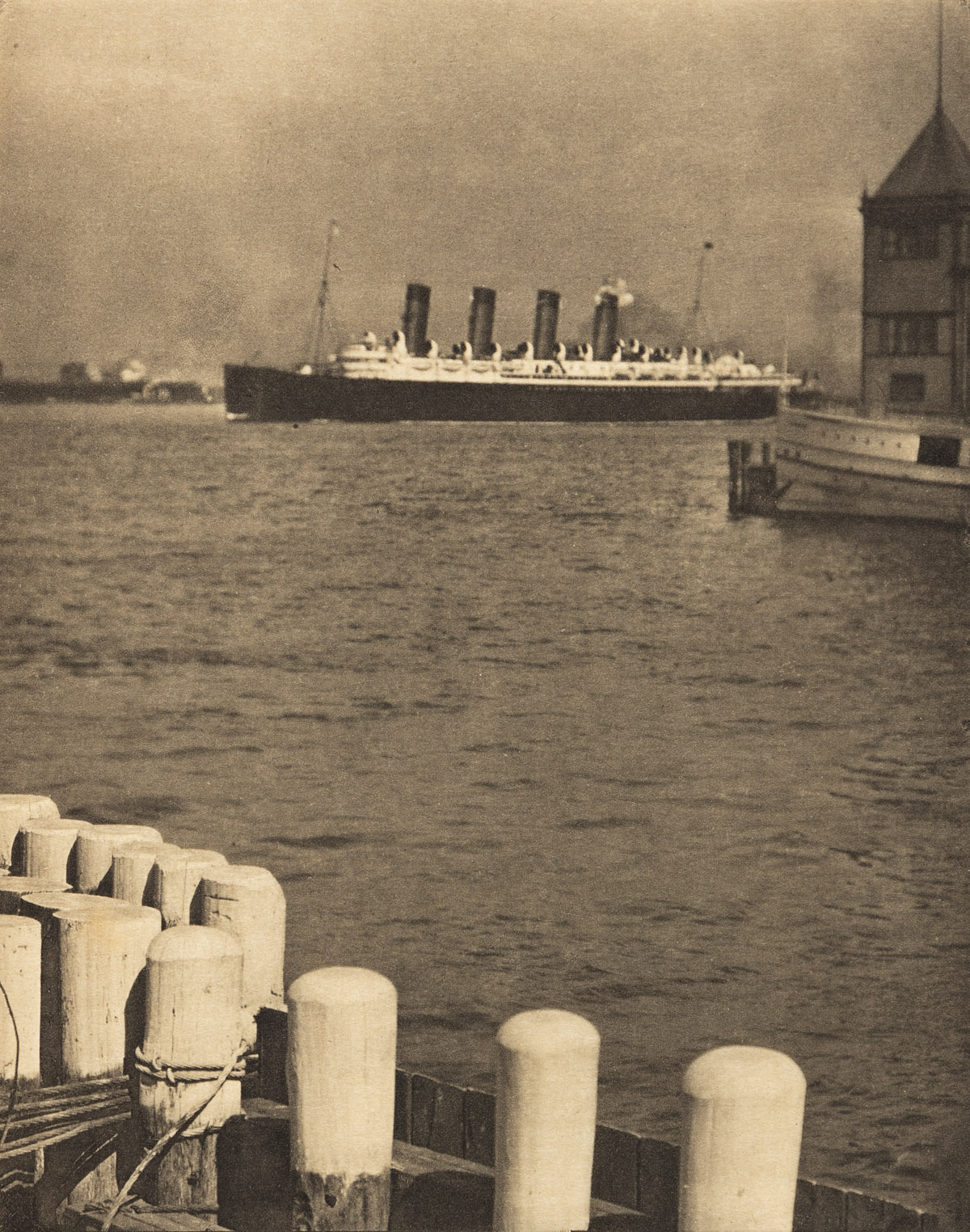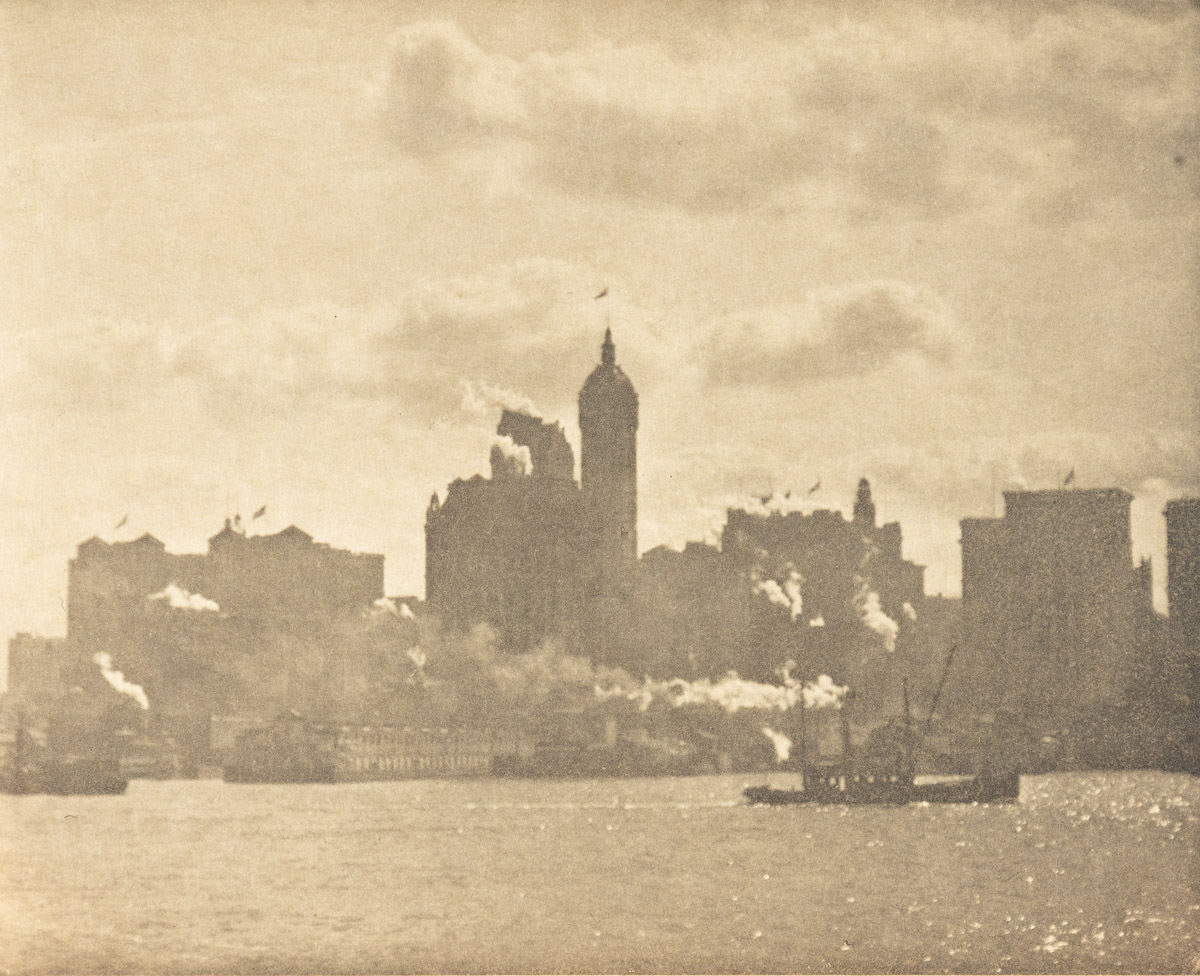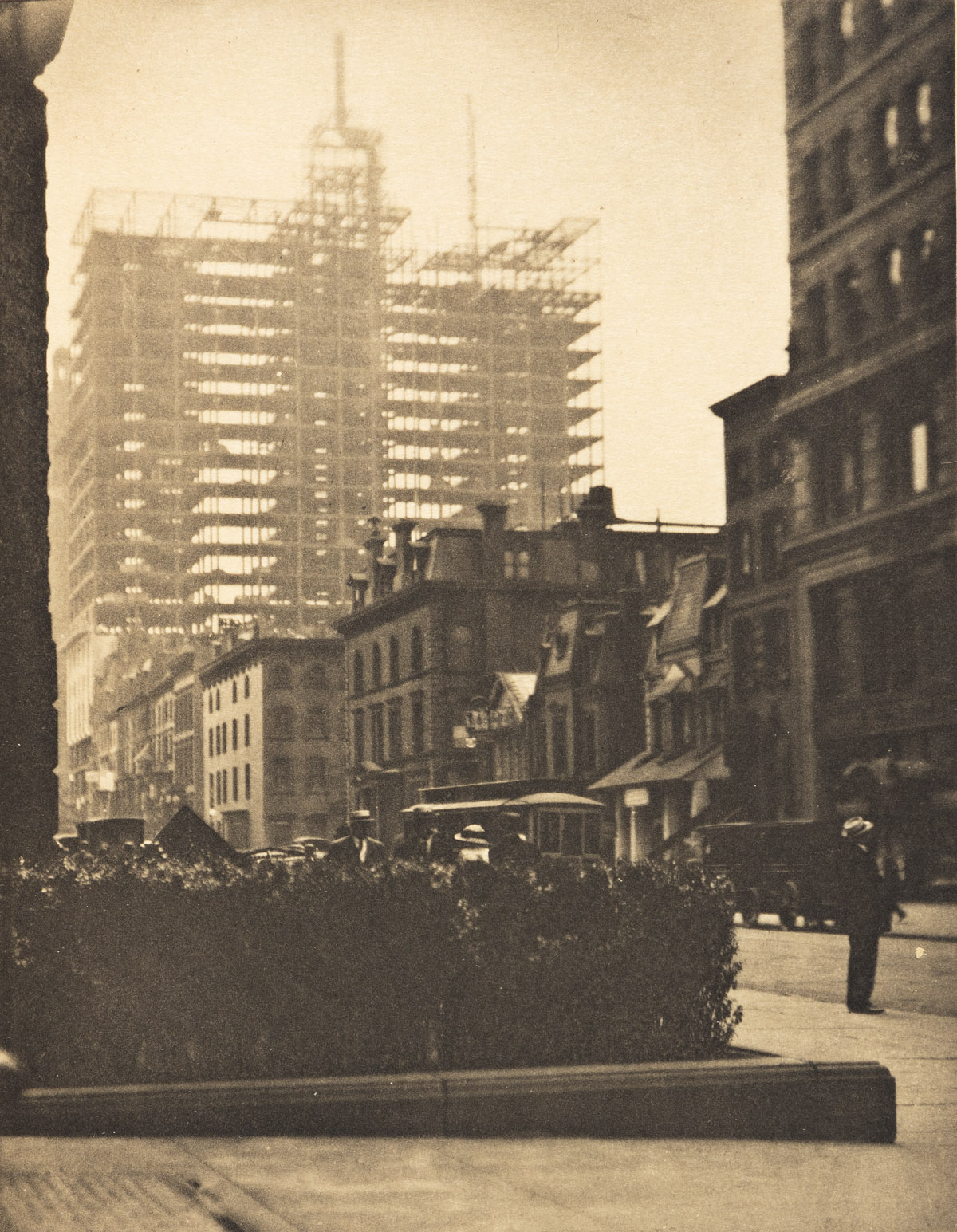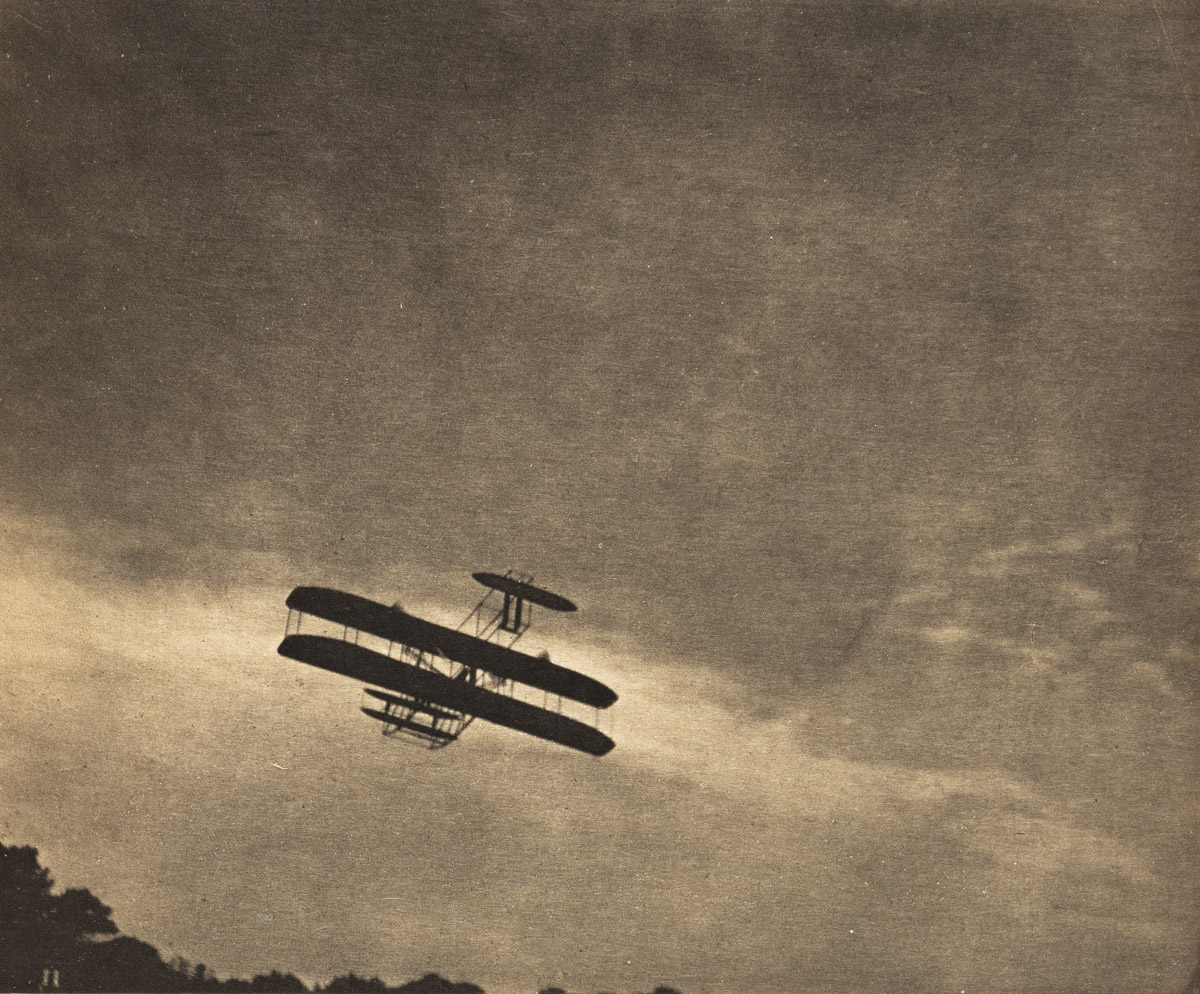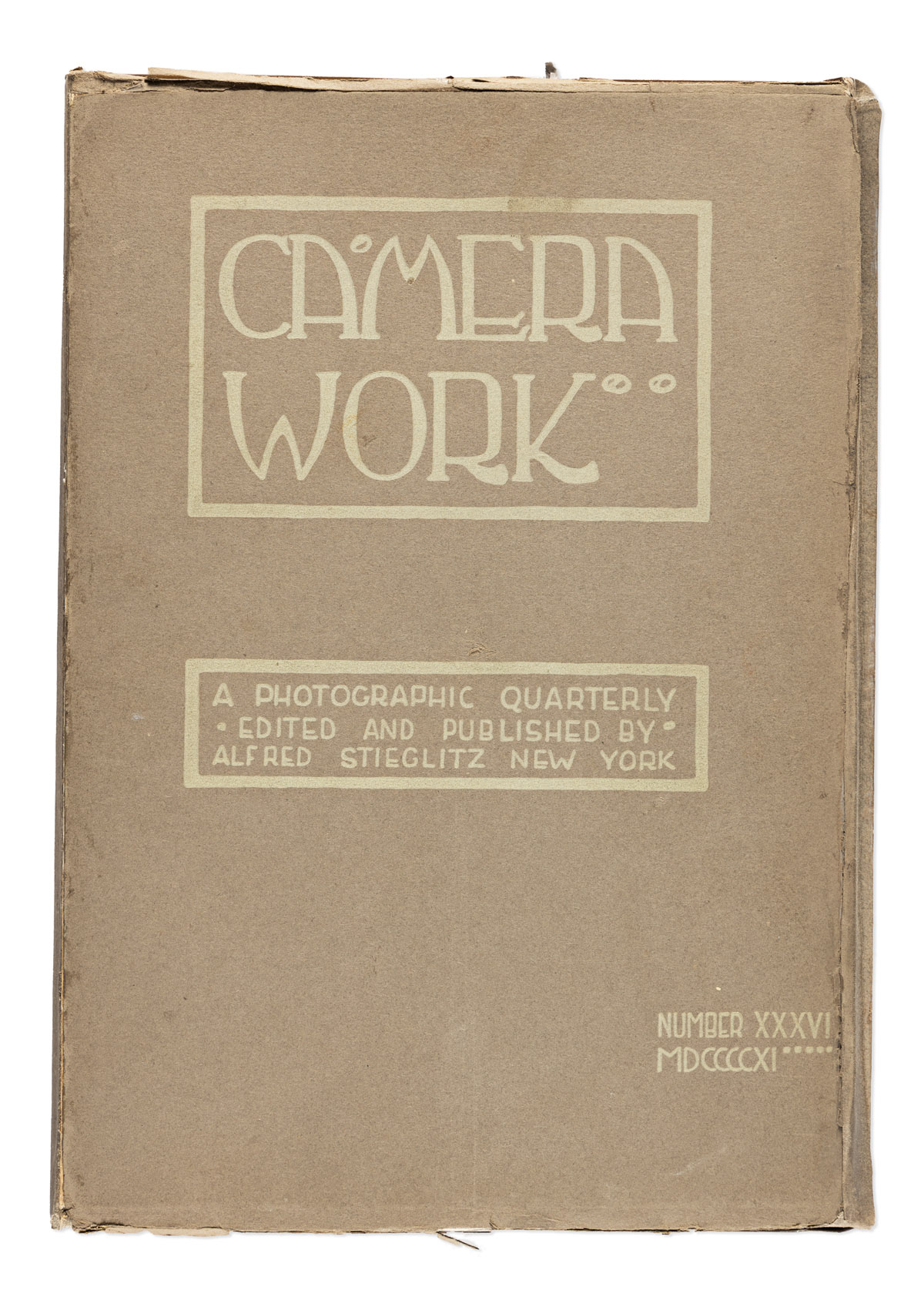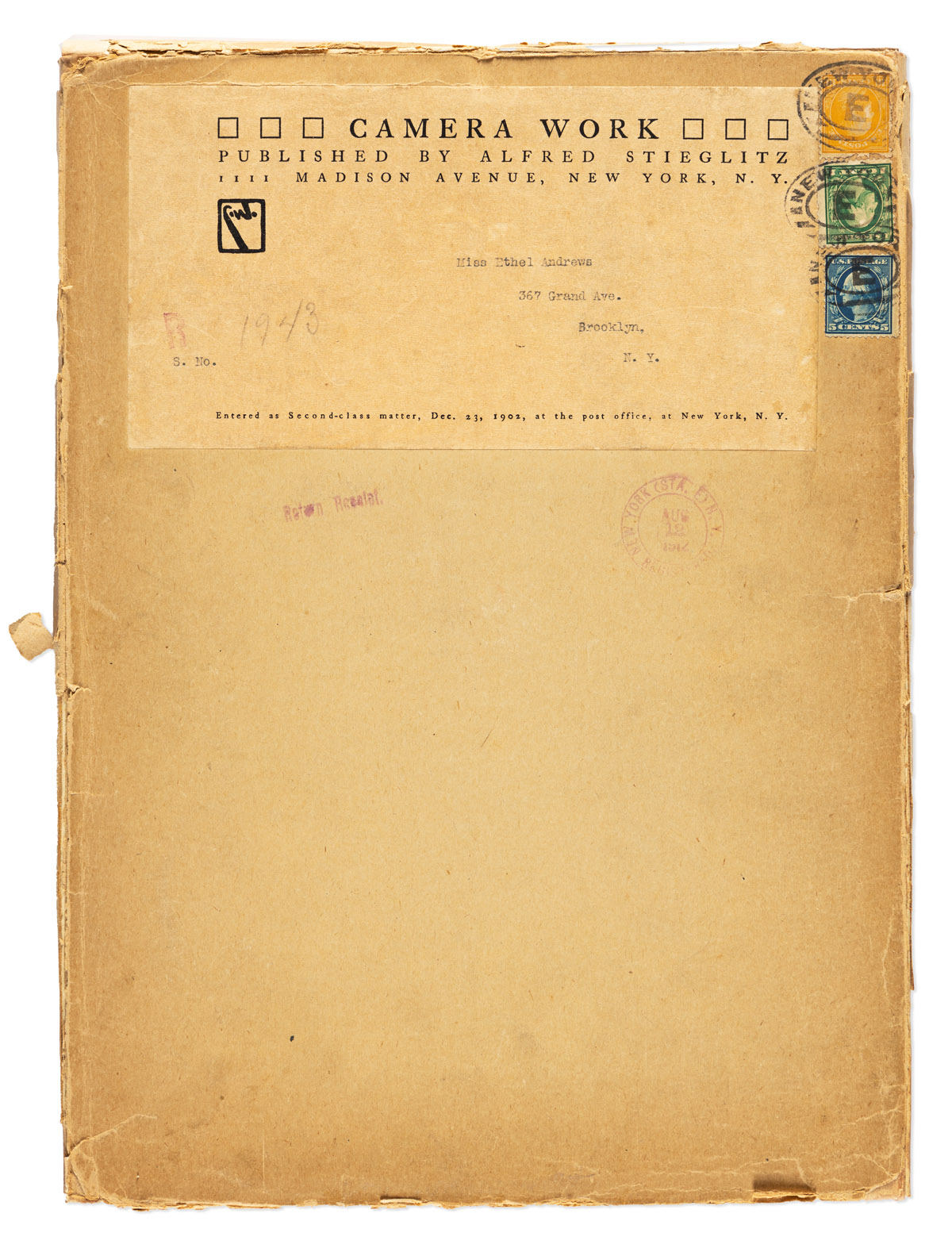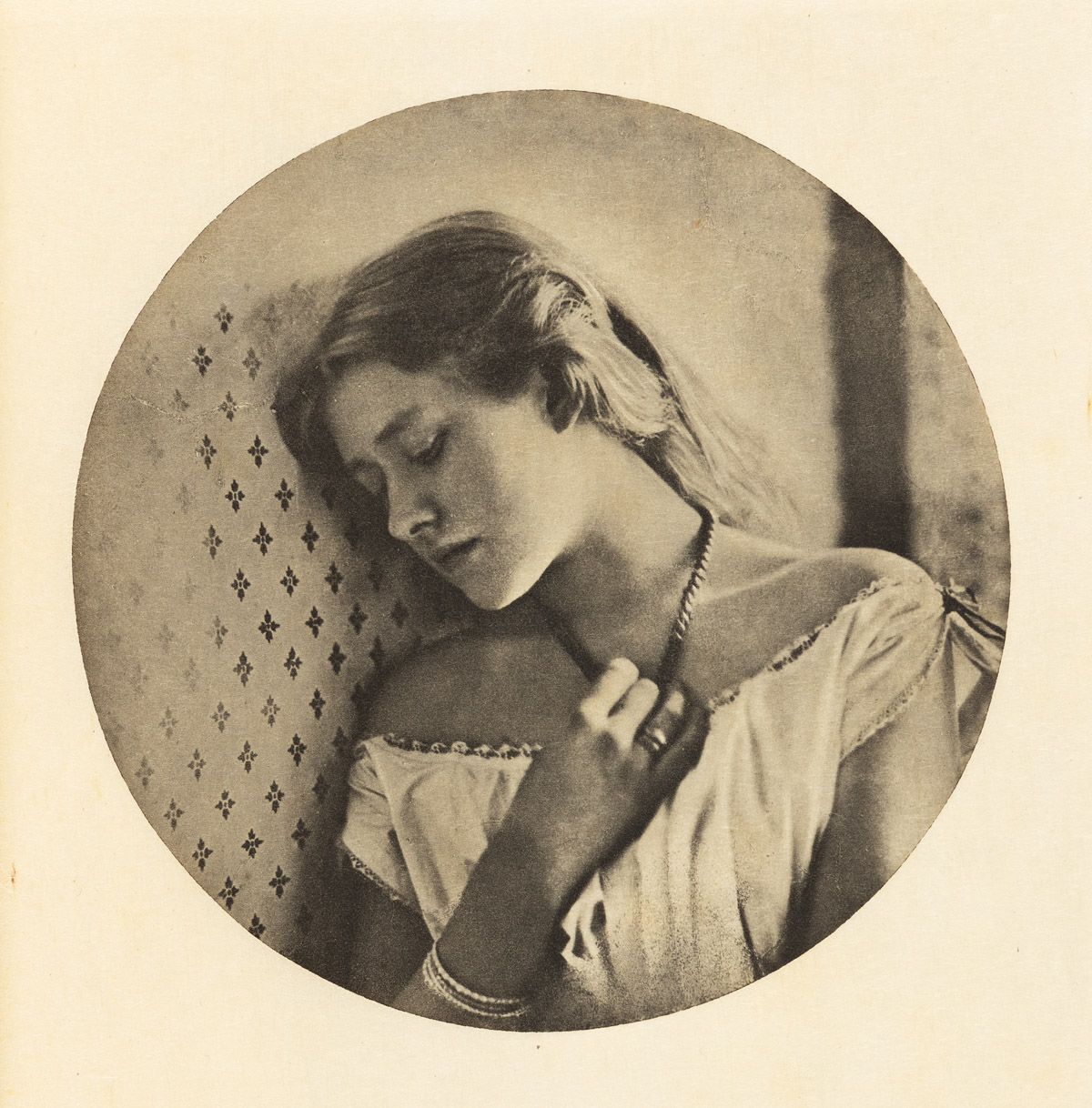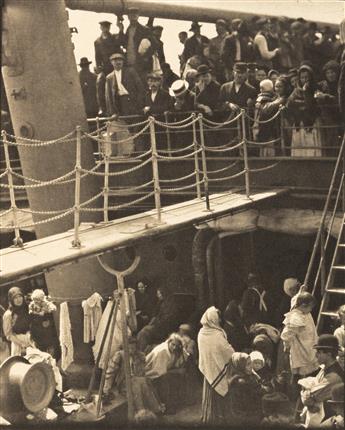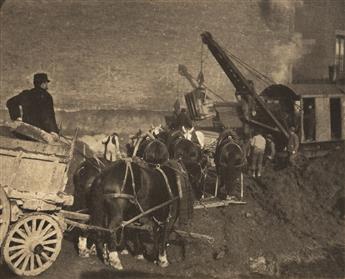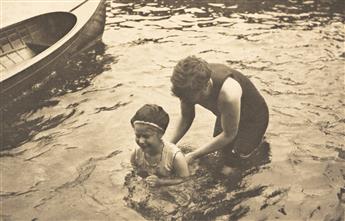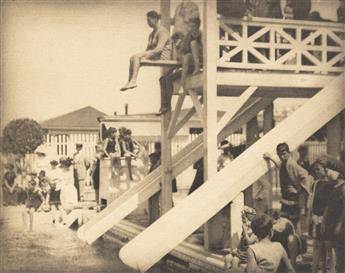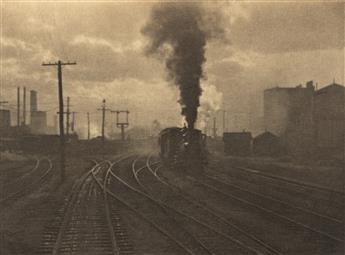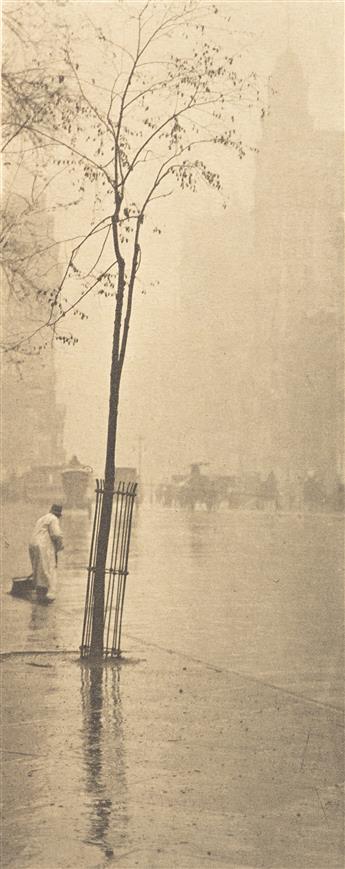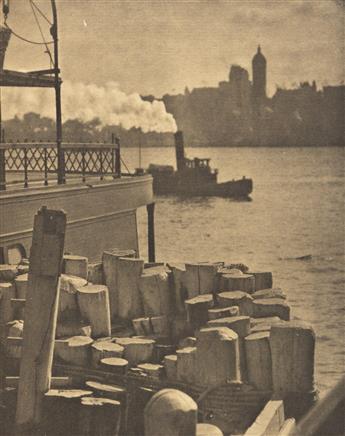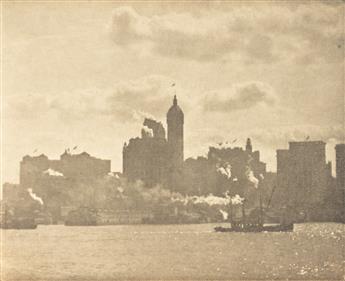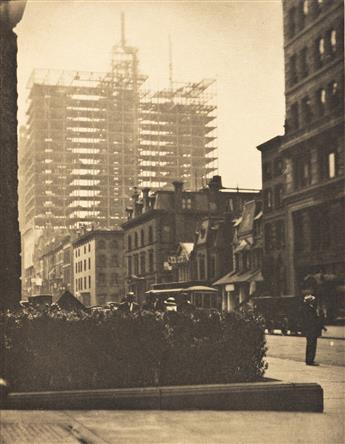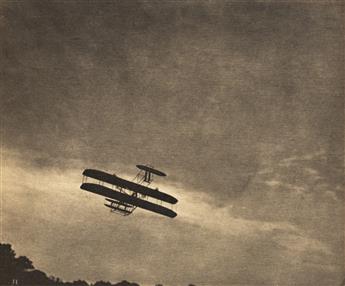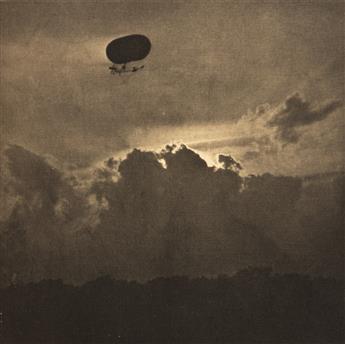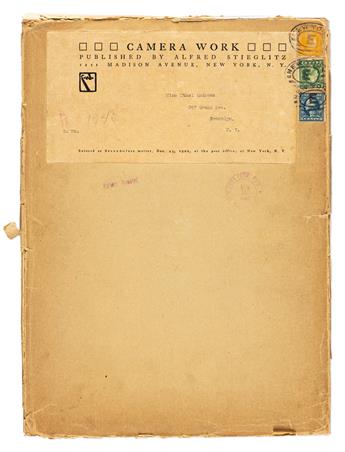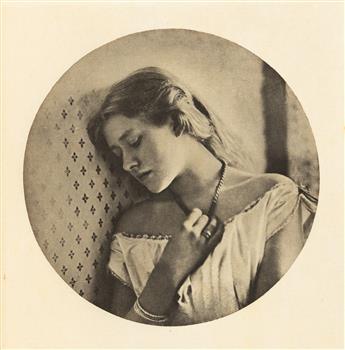Sale 2594 - Lot 34
Unsold
Estimate: $ 18,000 - $ 22,000
CAMERA WORK.
Number 36. Edited by Alfred Stieglitz. An iconic issue, complete with the 16 photogravures after Stieglitz's photographs, including the first appearance of his hugely influential image The Steerage. This copy also presented in the original mailing envelope with a 1912 mail stamp, and with an extra photogravure laid in, Julia Margaret Cameron's portrait of Ellen Terry (reproduced in Camera Work Number 41, published in 1913). 4to, original printed gray wrappers, the edges are untrimmed; the backstrip repaired; the gravures clean and richly printed; housed in a custom clamshell case. New York, 1911
The City of Ambition * The City Across the River * The Ferry Boat * The Mauretania * Lower Manhattan * Old and New New York * The Aeroplane * A Dirigible * The Steerage * Excavating--New York * The Swimming Lesson * The Pool--Deal * The Hand of Man * In the New York Central Yards * The Terminal * Spring Showers, New York * Picasso drawing
Number 36. Edited by Alfred Stieglitz. An iconic issue, complete with the 16 photogravures after Stieglitz's photographs, including the first appearance of his hugely influential image The Steerage. This copy also presented in the original mailing envelope with a 1912 mail stamp, and with an extra photogravure laid in, Julia Margaret Cameron's portrait of Ellen Terry (reproduced in Camera Work Number 41, published in 1913). 4to, original printed gray wrappers, the edges are untrimmed; the backstrip repaired; the gravures clean and richly printed; housed in a custom clamshell case. New York, 1911
The City of Ambition * The City Across the River * The Ferry Boat * The Mauretania * Lower Manhattan * Old and New New York * The Aeroplane * A Dirigible * The Steerage * Excavating--New York * The Swimming Lesson * The Pool--Deal * The Hand of Man * In the New York Central Yards * The Terminal * Spring Showers, New York * Picasso drawing
Additional Details
Ethel Andrews, to whom the mailing envelope is addressed, was an assistant to Alfred Stieglitz. She gave this copy of Number 36 to friend of hers in the 1960s, from whom the current owners purchased the issue, in 2007.
In the early decades of the 20th century, as photography was establishing itself as an art form for the amateur snapshooter, Alfred Stieglitz pursued the realization of his daring artistic vision as well as popular and institutional recognition for his work. Relentless in experimentation, reinvention, and creative dexterity, Stieglitz used Camera Work to make the American introduction of new writers and artists, as a venue for his tireless insistence on photography's rightful place next to these tastemakers, and, eventually, a forum for the bold idea that photography was uniquely suited to depict modern life.
Edward Steichen designed Camera Work's cover, creating a unique Art Nouveau-inspired font in white on the magazine's soft gray wrappers, and this simple, highly elegant design signaled Stieglitz's intent to his audience. Its extravagant photogravures (often printed on delicately beautiful Japanese tissue) were hand-tipped into the publication. The high standards for the publication were Stieglitz's own for photography, and he offered his publication as the gold standard, and as a medium for debate and discussion.
Stieglitz's own imagery, which form the complete set of photogravures in this landmark issue, speak to his adoption of so-called "straight photography" and transition away from Pictorialism. The Steerge, reproduced here for the first time, remains today an icon of the modernist sensibility. However, here we also often see him turn to atmospheric effects, using smoke and weather to both mask and illuminate the urban landscape, effectively both concealing the city's modernity while also juxtaposing the new urban environment with the natural environment it displaced. Stieglitz, one of New York City's most poetic and muscular photographers, captures both the intimacy and the modern isolation of the early twentieth-century urban environment.
In the early decades of the 20th century, as photography was establishing itself as an art form for the amateur snapshooter, Alfred Stieglitz pursued the realization of his daring artistic vision as well as popular and institutional recognition for his work. Relentless in experimentation, reinvention, and creative dexterity, Stieglitz used Camera Work to make the American introduction of new writers and artists, as a venue for his tireless insistence on photography's rightful place next to these tastemakers, and, eventually, a forum for the bold idea that photography was uniquely suited to depict modern life.
Edward Steichen designed Camera Work's cover, creating a unique Art Nouveau-inspired font in white on the magazine's soft gray wrappers, and this simple, highly elegant design signaled Stieglitz's intent to his audience. Its extravagant photogravures (often printed on delicately beautiful Japanese tissue) were hand-tipped into the publication. The high standards for the publication were Stieglitz's own for photography, and he offered his publication as the gold standard, and as a medium for debate and discussion.
Stieglitz's own imagery, which form the complete set of photogravures in this landmark issue, speak to his adoption of so-called "straight photography" and transition away from Pictorialism. The Steerge, reproduced here for the first time, remains today an icon of the modernist sensibility. However, here we also often see him turn to atmospheric effects, using smoke and weather to both mask and illuminate the urban landscape, effectively both concealing the city's modernity while also juxtaposing the new urban environment with the natural environment it displaced. Stieglitz, one of New York City's most poetic and muscular photographers, captures both the intimacy and the modern isolation of the early twentieth-century urban environment.
Exhibition Hours
Exhibition Hours
Aliquam vulputate ornare congue. Vestibulum maximus, libero in placerat faucibus, risus nisl molestie massa, ut maximus metus lectus vel lorem.



